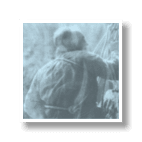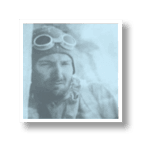Memorial of Expedition Peru 1970
The history of the Jizerská 50 dates back to 1968, when the first race took place as part of winter preparations by mountaineers for their upcoming season. When some of the race’s founders set out for their mountaineering exhibition in Peru in 1970, they had no idea of the fate that awaited them. Fourteen members of the expedition lost their lives in a rock avalanche on Peru’s Huascarán, and a fifteenth member had died a few days earlier. Since that time, the race has been referred to as the Peru Expedition Memorial, and a remembrance of the climbers has become an integral part of the ceremonial opening of the Jizerská 50.
HUASCARÁN: STEP BY STEP
The timeline of the tragedy that completely changed the nature of the Jizerská 50 race:
October 1969 – Change of direction
A congress of the International Climbing and Mountaineering Federation took place in Czechoslovakia, and good relations were established between Czechoslovak and Peruvian climbers. Following a ban on a group of mountaineers from visiting their original destination of Alaska, an alternative emerged. Preparations for the Peru 1970 Expedition started immediately after the arrival of an invitation from South America.
1 February 1970 – The last time at Jizerská 50
All of the 15 mountaineers took part in the third year of the Jizerská 50. All of them were to die several months later during the Peru Expedition.
23 April 1970 – Undesirable
The mountaineer Jiří Bolech from Liberec did not board the plane to the expedition site in Peru. He had been told that it was not in the interest of the state for him to travel anywhere.
18 May 1970 – The death of the best
During a hike in easy, walking terrain, Ivan Bortel, the best climber in the expedition, slipped. He died on the spot after a thirty-metre fall. The members considered ending the expedition then and there.
31 May 1970 – The time of the disaster
Sunday afternoon. The clock read 15:23:31. The coast of the Pacific Ocean was hit by an earthquake that registered 7.9 on the Richter scale. The northern wall of Huascarán collapsed, causing a mass of ice and rock to flow into the valley below and burying all 14 mountaineers. On that day, seventy thousand people died in this area. It was one of the greatest natural disasters in South America’s recent memory.
11 June 1970 – The end of hoping
For twelve days, families of the mountaineers cherished little sparks of hope that some of the climbers might have survived the disaster. However, they were all extinguished by the final report of a Chilean rescue expedition on 11 June, which confirmed that ‘all fourteen Czechoslovaks and the Chilean mountaineer Pedro Nuñez, who was staying in the base camp at that time, fell victim to the natural disaster’. This group earned a tragic distinction in Czechoslovak mountaineering: it was the first expedition from which no one returned.
31 January 1971 – The race continues…
The fourth year of the Jizerská 50 transformed into a remembrance event in honour of the fifteen Czechoslovak mountaineers, many of whom had helped to established the race. For the first time, the race was referred to as the ‘Peru Expedition Memorial’. In that same year, the number of racers began to increase by an order of magnitude, and one year later the first foreign racers were invited. A tradition, which has lasted even until today, also originated in the fourth year: racers kept their starting numbers as a keepsake.
The mountaineers who died during the expedition to the Peruvian Andes in 1970:
Václav URBAN (35 years)

Arnošt ČERNÍK (44 years)

Jiří RASL (34 years)

Milan NÁHLOVSKÝ (26 years)

Valerián KAROUŠEK (41 years)

Zdeněk NOVOTNÝ (32 years)

Vilém HECKEL (52 years)

Ladislav MEJSNAR (34 years)

Jaroslav KRECBACH (24 years)

Milan ČERNÝ (26 years)

Svatopluk ULVR (32 years)

Bohumil NEJEDLO (38 years)

Miloš MATRAS (34 years)

Jiří JECH (38 years)

Ivan BORTEL (27 years)















